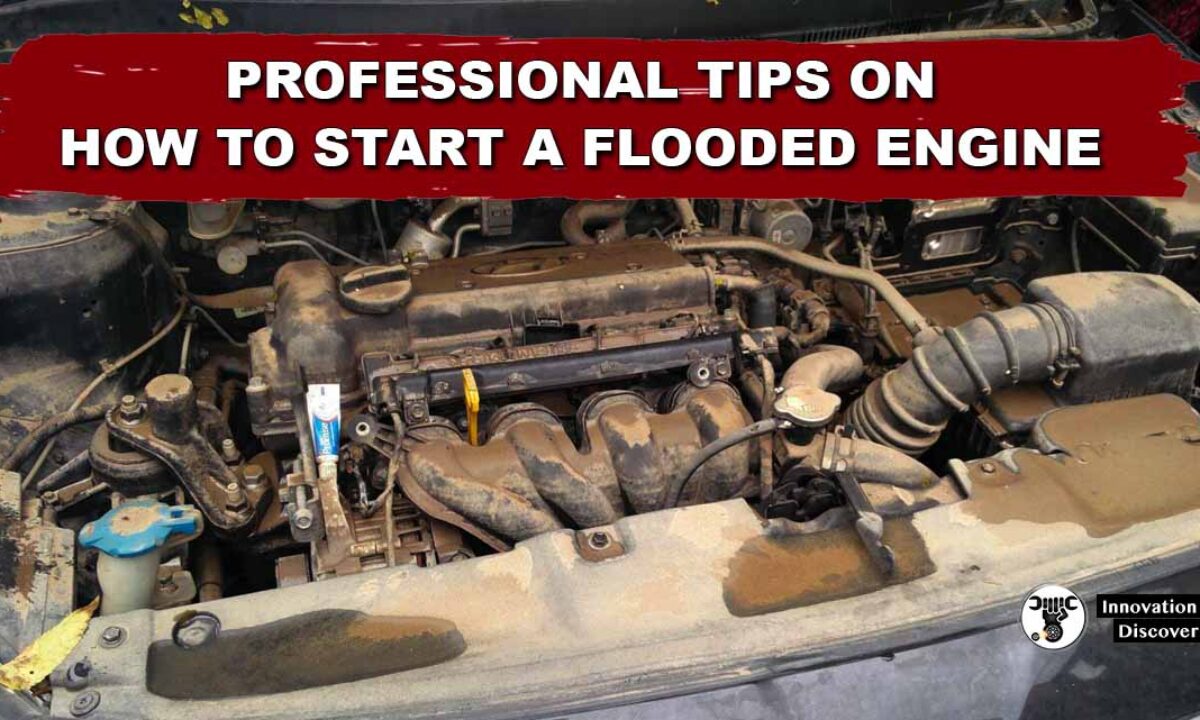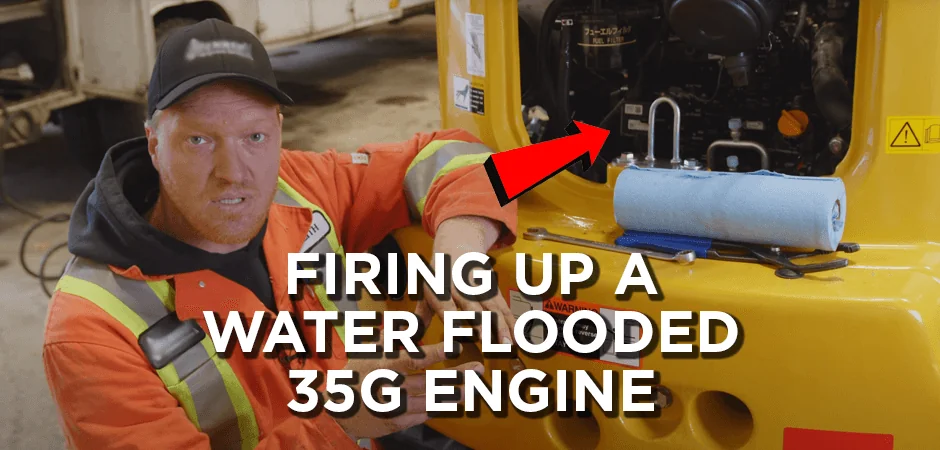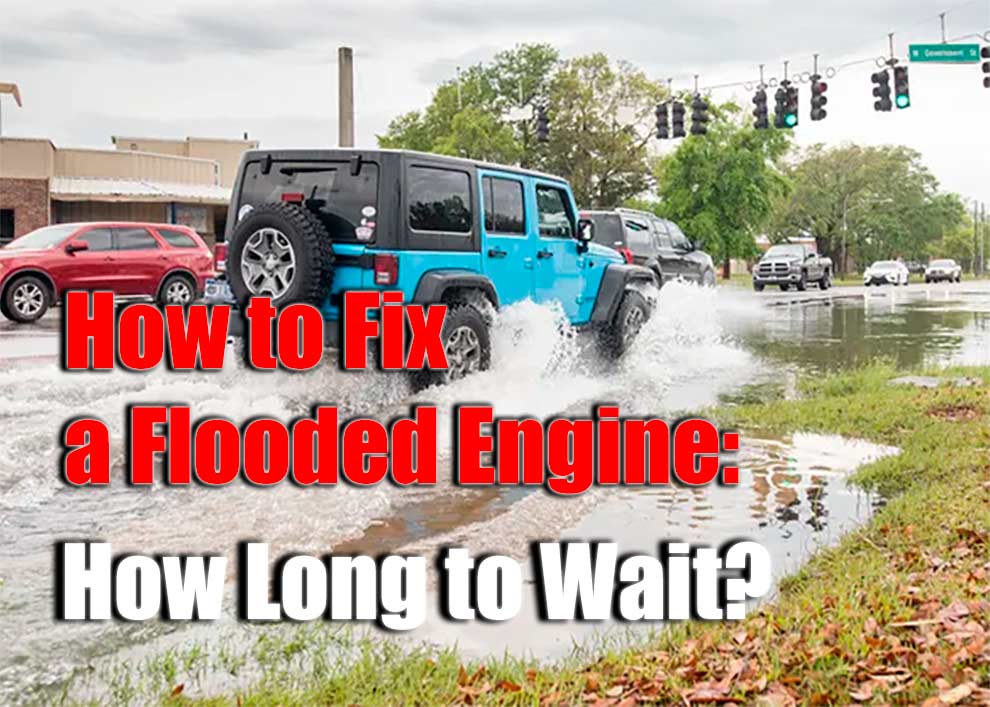Will A Flooded Engine Fix Itself

The dread of a flooded engine hangs heavy over every driver, a moment of sputtering silence that can quickly escalate into a costly repair bill. Many drivers are left wondering: can a flooded engine, that frustrating symbol of mechanical mishap, simply fix itself over time? This is a question that balances hope against the cold reality of engine mechanics, a gamble against the potential for more severe, long-term damage.
This article delves into the intricacies of engine flooding, examining whether self-correction is a viable solution and what factors influence the outcome. Understanding the mechanism behind flooding and the potential consequences of inaction is crucial for making informed decisions about your vehicle's health. We'll explore expert opinions, preventative measures, and the critical steps to take when faced with this common engine ailment.
Understanding Engine Flooding
Engine flooding occurs when an excessive amount of fuel enters the engine's cylinders, exceeding the air-to-fuel ratio required for combustion. This surplus fuel overwhelms the spark plugs, preventing them from igniting the mixture and causing the engine to stall or refuse to start. The underlying causes can range from faulty fuel injectors to problems with the carburetor, or even simply repeated attempts to start a cold engine.
The Mechanics of a Flooded Engine
Modern engines, often equipped with electronic fuel injection (EFI) systems, are generally less susceptible to flooding compared to older carburetor-based engines. EFI systems are designed to precisely meter fuel delivery, adjusting based on engine temperature and other factors to prevent over-fueling. However, even these sophisticated systems can malfunction, especially if sensors become faulty or fuel injectors leak.
Carburetors, on the other hand, rely on mechanical principles to mix air and fuel, making them more prone to flooding if the float valve malfunctions or if the choke is improperly set. Repeatedly cranking the engine without allowing the excess fuel to dissipate can exacerbate the problem, saturating the cylinders and further hindering ignition.
Can a Flooded Engine Resolve Itself?
In some cases, a flooded engine can resolve itself, although this is not a guaranteed outcome. This is more likely to occur when the flooding is minor and caused by a transient issue, such as a brief over-application of the accelerator pedal.
Allowing the engine to sit for a period of time, typically 15-30 minutes, can provide the excess fuel an opportunity to evaporate and clear from the cylinders. In this scenario, the engine might start normally after this period.
Factors Influencing Self-Correction
Several factors influence whether a flooded engine will self-correct. The extent of the flooding plays a significant role; a slightly flooded engine is more likely to recover on its own than one saturated with fuel.
The ambient temperature also matters. Warmer temperatures encourage fuel evaporation, aiding in the clearing of the cylinders. The engine design and age influence whether or not a flooded engine will clear itself. Older vehicles may be more prone to persistent flooding issues.
The Risks of Waiting and Potential Damage
While waiting for self-correction seems like an easy solution, it's crucial to understand the potential risks involved. Prolonged flooding can lead to fuel dilution of the engine oil, reducing its lubricating properties and accelerating engine wear. This is especially true if repeated attempts are made to start the flooded engine without success.
Excess fuel can also wash away the oil film on the cylinder walls, increasing friction and the risk of cylinder scoring. In severe cases, raw fuel can enter the catalytic converter, potentially damaging it and leading to costly repairs.
Expert Recommendations and Remedial Actions
Most automotive experts recommend against solely relying on self-correction, especially if the flooding is severe or persistent. Instead, they suggest specific remedial actions to clear the engine and prevent further damage.
One common technique involves depressing the accelerator pedal fully while cranking the engine. This engages a "clear flood mode" in many modern vehicles, which cuts off fuel supply and allows the engine to crank with only air, helping to dry out the cylinders. Refer to your vehicle's owner's manual for specific instructions.
If the clear flood mode is ineffective, consider removing the spark plugs and allowing the cylinders to air out thoroughly. This is especially crucial if you suspect significant fuel contamination in the cylinders. Consulting a qualified mechanic is strongly recommended if you're not comfortable performing this procedure yourself.
Preventative Measures and Long-Term Engine Health
Preventing engine flooding in the first place is the best strategy for maintaining long-term engine health. Regular maintenance, including replacing spark plugs and fuel filters according to the manufacturer's recommendations, can help ensure proper fuel delivery and ignition.
Avoid repeatedly cranking the engine without success. If the engine fails to start after a few attempts, diagnose the underlying issue before continuing. Pay attention to any warning signs, such as rough idling or difficulty starting, which could indicate a potential fuel system problem.
Looking Ahead
The automotive industry is continually evolving, with advancements in engine management systems designed to minimize the risk of flooding. Hybrid and electric vehicles, with their different propulsion systems, largely eliminate the risk of traditional engine flooding.
Despite these advancements, understanding the fundamentals of engine operation and the potential for flooding remains essential for all drivers. Prompt diagnosis and appropriate remedial action are crucial for preventing costly repairs and ensuring the longevity of your vehicle's engine. Ignoring the problem in hopes of self-correction could ultimately cost you more in the long run.
While a flooded engine *might* fix itself in minor cases, relying on this outcome is a gamble with potentially serious consequences. Taking proactive steps and seeking professional assistance when needed is the safest and most effective approach to resolving engine flooding and protecting your vehicle's engine.


















